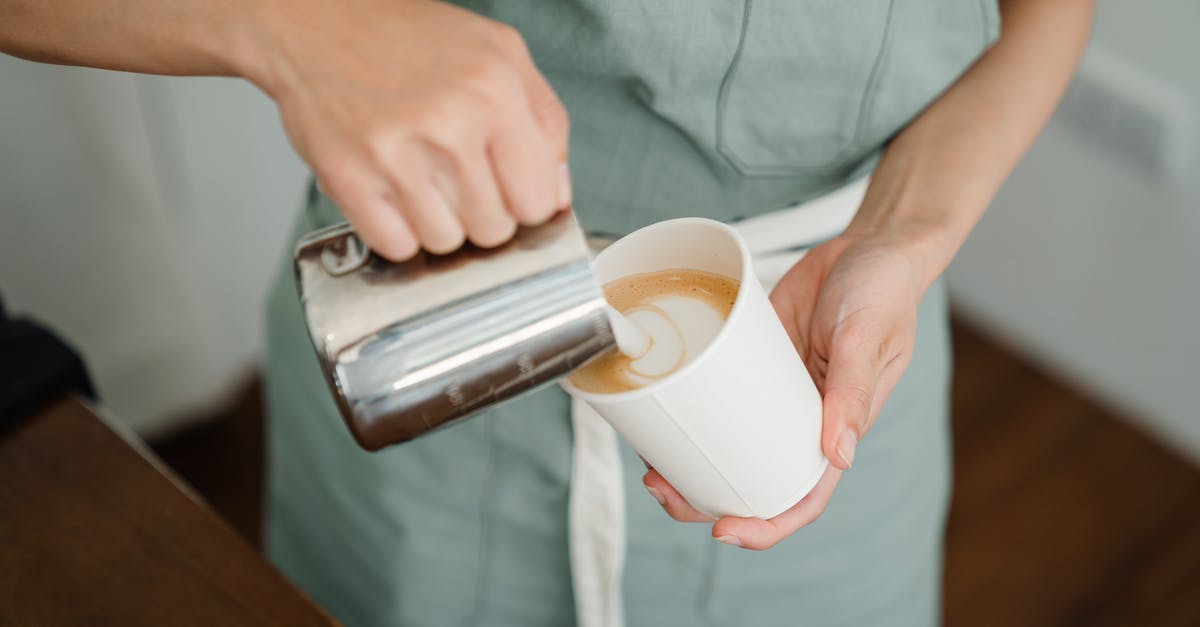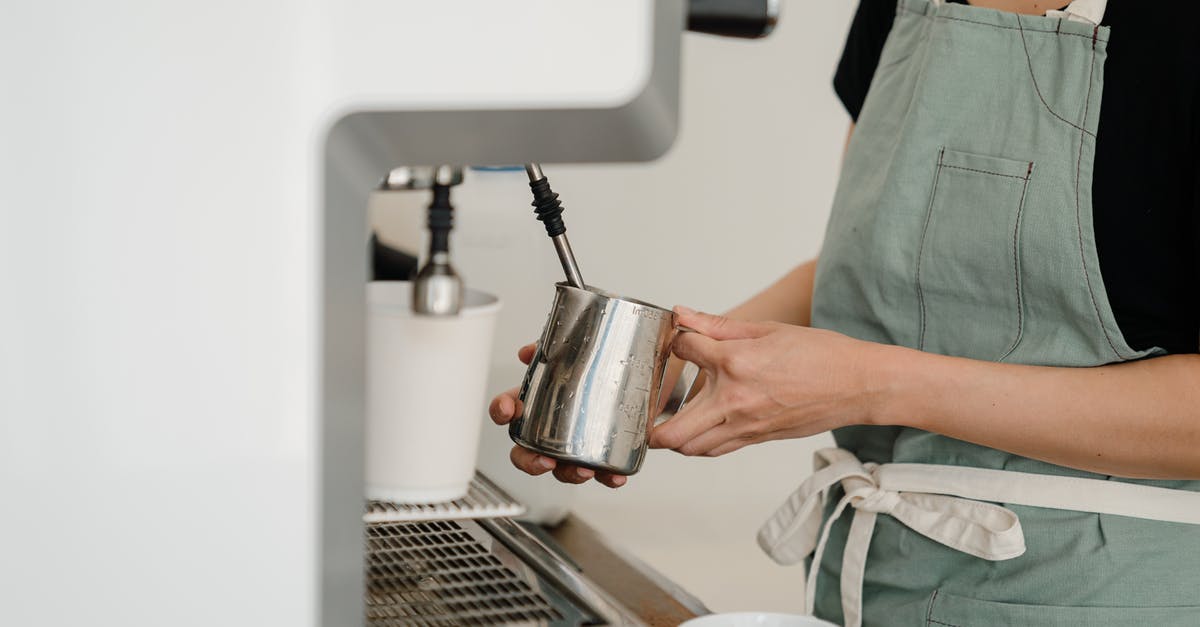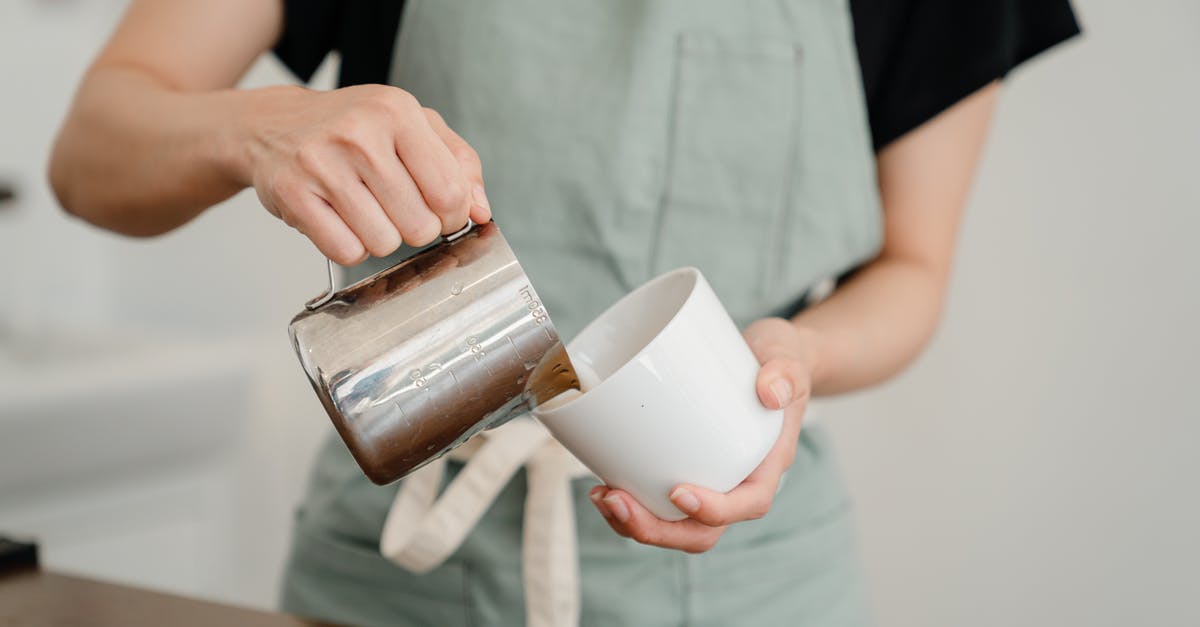Does milk make cakes lighter or tougher?

After looking online on several websites and forums, there seems to be conflicting answers to this. Some people say that it gives a lighter texture, while others say it gives a more rubbery/tougher texture (due to more gluten being developed). So what's the real truth here? Thanks.
Best Answer
Some people say that it gives a lighter texture, while others say it gives a more rubbery/tougher texture (due to more gluten being developed).
I would challenge the notion that these two aspects are necessarily opposed. Lighter doesn't necessarily mean "softer" or "more tender"; in cakes, it generally means "rising higher with more air." The way that cakes rise higher with more air is partly by having a stronger gluten structure, along with more gas released during baking to inflate the batter. Yes, having a stronger gluten structure will increase "toughness," but cakes already tend to have a very high amount of fat and sugar, which both serve to soften the texture. The two options being compared here are not "lighter" vs. "rubbery." Rather, if milk is added, the cake may be both lighter and stronger in structure, which may make it slightly more "spongy," rather than a cake without milk that is denser and more crumbly.
Also, the question as asked brings up an implicit, "Compared to what?" If one doesn't add milk, what is added to replace it? Because most cakes need a certain amount of moisture/water, whether that comes from water or from components milk or eggs, etc. In the CIA's Baking and Pastry book where the role of ingredients in baking is described, they state:
Water acts to dilute or liquefy water-soluble ingredients such as sugar and salt. [...] In addition, water helps to develop the proteins in flour, necessary for proper leavening. Water also acts as a leavener when it changes to steam and expands.
Milk performs many of the same functions as water, but because of its additional components (fat, sugar, minerals, and protein), it also serves a number of other functions and adds flavor as well. [...] The lactic acid in milk has a tightening effect on the proteins in flour that serves to increase stability, resulting in a product with a fine grain and texture.
In sum, milk, like water, will thus help to develop the proteins in flour (gluten), but that's a necessary step to some extent to produce a "light" cake, rather than a dense and crumbly one. It adds steam which also helps the cake to rise more. But milk, unlike plain water, also comes with things like fat and sugar that will mitigate some of the "toughness" that comes with the added structure of gluten. The protein in milk will provide both some structure and tenderness. Furthermore, the acid component helps create a fine structure that adds to the sensation of a softer, more cottony texture.
I think the perception that milk (and water) contribute to "toughness" or a "rubbery" texture comes out of pastry-making, where adding too much can indeed produce a tough product. As Harold McGee writes in On Food and Cooking regarding pastry:
Water is essential for binding the flour particles into a dough, and the water content is especially critical because there is so little. Pastry cooks say that as little as 1/2 teaspoon/3 ml variation in water in 1 cup/120 gm flour can make the difference between a crumbly texture and a tough one.
McGee (and others) note that in pastry-making, milk is often a better choice for the reasons stated above: it contains fat and sugar and acid that improve effects on dough, in addition to the water it provides. However, it's important to remember that cake batter is a lot different from pastry dough. The low water content of pastry dough is essential to allow the fat/flour mixture to maintain its integrity and create the flaky layers most prized. A little more water will cause the dough to mix too much, gum together, and remain tough after baking.
Cake batter, however, has a significantly greater amount of moisture, which (as noted above) not only develops gluten to allow a higher rise, but also produces significant steam during baking that contributes to the leavening effect.
So, the question is: if not milk, where are you getting that water from in your cake batter? Some ingredients (like plain water) may be worse than milk in creating more gluten structure while providing less fat/sugar/acid that softens the dough, but other sources of water (like eggs, buttermilk, various forms of cream, etc.) may provide other benefits that come from their additional components. The choice really depends on the specific type of cake, as well as the desired flavor and texture.
Pictures about "Does milk make cakes lighter or tougher?"



Quick Answer about "Does milk make cakes lighter or tougher?"
Milk in cake recipes, generally makes the texture lighter and stronger (thanks to the protein and lactic acid),. Adding the right amount keeps the cake from being dense. Milk (and other liquids) actually activates other ingredients in the cake batter like leaveners (baking soda, baking powder).Does milk Make cake hard?
It adds steam which also helps the cake to rise more. But milk, unlike plain water, also comes with things like fat and sugar that will mitigate some of the "toughness" that comes with the added structure of gluten. The protein in milk will provide both some structure and tenderness.What does milk do to a cake?
Milk is a nutrient-rich white fluid secreted from the mammary glands of female mammals. In baking, it moistens batter or dough, and adds protein, color and flavor to baked goods. The most common form of milk in baking is non-fat dry milk (NFDM), which is dehydrated skim milk.Does milk make a difference in baking?
Purpose of Milk in Baking This not only improves the texture of your baked good, but also hydrates your proteins and starches as well as your leavening agents, which initiates the chemical reactions that change the structure and texture of your batter or dough.What happens if you add too much milk to a cake?
The ratio of wet to dry ingredients determines a cake's moisture level. If there's simply too much flour and not enough butter, a cake will taste dry. On the other hand, if there's too much milk and not enough flour, a cake will taste too wet.The Science of MILK (Is It Really Good For You?) | Acne, Cancer, Bodyfat...
More answers regarding does milk make cakes lighter or tougher?
Answer 2
Gluten is formed when the glutenin and gliadin, proteins naturally found in wheat, are combined with water. Milk certainly contains a large proportion of water...85 - 95%, in fact.
This paper suggests that milk contributes "water and nutrients...helps browning...and adds flavor." It does go on to state (about yeast doughs) that the "quality of the dough" is improved, though it does not define "quality." Finally, it states that the volume of yeast doughs are improved with the addition of milk.
The University of Toronto Food Services site states:
The protein in milk softens, contributes moisture, and adds colour and flavour to baked goods. It’s a double-whammy in terms of function, as it gives the dough or batter strength and structure, as well as adds tenderness, flavour and moisture.
The main protein in milk is casein. This paper appears to suggest that
Structure formation was favored by mixing gluten with egg white but not with casein.
So, you are correct in your reporting that the explanation appears mixed. What I am left with is that, perhaps it is the water content in the milk that is aiding in the structural development (more so than the protein), while the other elements add color, flavor, and nutritional value.
Finally, I'll add, that when it comes to cakes, the type of flour and minimal mixing is probably more important. This helps to keep the gluten structure weak, which is what is usually desired.
Answer 3
The other answers here are great but to address your specific question in response to Athanasius' answer, you probably would not want to add either to that specific recipe unless you left out an ingredient and it was calling for one. I am, however, hard-pressed to think of any cake recipes that use water instead of fat for liquid and that is due to what water specifically adds to a bake.
As stated in the other answers, milk is adding some water but also comes with sugar, fat, and other nutrients that affect the batter. This is why cakes usually have a pale to yellow color unless food coloring or chocolate are added to the batter. In your case, rather than milk, you have oil in your cake. There is usually some mix of oil, eggs, milk (2% or whole), or all of the above. I only found a single recipe after doing a cursory search that added water to dilute heavy cream instead of using whole milk.
To better illustrate the difference, it is better to look at bread baking instead of cake. You will notice that some recipes have water and some have milk or oil. Recipes that have water will usually bake at a higher temperature for a shorter amount of time. This is because having a higher water content will allow the inside of the bread to steam. This high temperature is essential to form a crusty bread with a stringy gluten structure on the inside like a ciabatta. Milk based breads, at least in Asia, are often steamed or baked at a low temperature (think bao zi). This is because they have less water content and higher fat content. To fully cook through at a normal bread baking temperature, the outside would burn due to having more fat in the dough and the inside would be soft as you'd expect.
The long and short of it has been addressed in the other answers. Fat adds color, flavor, and a generally good "mouthfeel" to foods. You can see this more clearly in if you cook something like bacon in a nonstick pan with and without butter or oil. Bacon pan fried in butter or oil will be much crispier and have that traditional bacon color. The bacon will still cook without the added fat but will not have that traditional flavor and mouthfeel.
Baking with water based dough allows you to bake at a higher temperature because the interior dough will be cooked by steam while the outside gets a nice crust due to some fat being added (usually oil). Most cake recipes will not use water because you usually do not want a cake with a crust. After doing a quick search, cake recipes usually bake at around 350 degrees Fahrenheit while breads will bake from 375-400 degrees Fahrenheit.
Sources: Stack Exchange - This article follows the attribution requirements of Stack Exchange and is licensed under CC BY-SA 3.0.
Images: Ketut Subiyanto, Ketut Subiyanto, Ketut Subiyanto, Ketut Subiyanto
